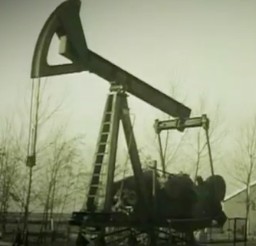
Few people think of the Netherlands as oil country, but with 1 billion barrels of oil, the Schoonebeek was the largest onshore oil field in Western Europe when it was discovered in 1943. But the oil was very viscous; over 50 years, only 18% was recovered through conventional techniques.
When oil prices crashed in the 90s, Royal Dutch Shell and ExxonMobil shut Schoonebeek down after having extracted only 250 million barrels of oil. Executives assumed the remaining viscous crude wasn't worth the money or the trouble - even though 75% still lay in the ground.
Oil field innovation is now happening so quickly that Schoonebeek reopened a year ago, using horizontal wells combined with low-pressure steam injection. Additionally, before the steam is injected underground, it also drives turbines to generate as much as 120 megawatts of power, which is fed into the grid.
Watch the video in the right hand window to hear Dick Benschop, President of Shell Netherlands, explains how the new technology is adding life to the peviously "exhausted" field. Eventually, enhanced oil recovery will pull another 120 million barrels of oil out of the ground over the next 25 years.
Shell press release. A PDF of process.


